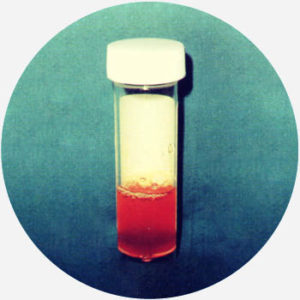Tech & Science dictionary
serosanguinous
[seer-oh-sang-gwi-nuh s]
What does serosanguinous mean?
Serosanguinous describes a substance comprised of both blood cells and serum.
Where does serosanguinous come from?

Serosanguinous features the prefix sero–, from the Latin serum (“watery fluid”) and sanguis (“blood”). Serum is a clear liquid made of plasma, easily distinguishable from red blood cells. Serosanguinous fluids are composed of clotted or diluted red blood cells mixed with serum, usually leaving a body from a wound or sampled from one. Unlike normal blood, serosanguinous drainage can be different colors, including milky-white, yellowish, pale pink, or clear.
In medical contexts, sanguinous has been used of such fluids since the 1830s, with serosanguinous recorded in medical journals as far back as the 1860s. While a very technical term largely used by medical professionals, serosanguinous can be easily found on popular medical websites such as Healthline.
Examples of serosanguinous
Who uses serosanguinous?
Serosanguinous is typically used in medical diagnoses of fluids, drainage, or leakage—or even more technically, exudate—from wounds. It may also be used in other scientific environments, such as labs testing on live subjects. While it may not be immediately familiar to the general population, patients may encounter serosanguinous when consulting with doctors or nurses about an injury.
Note
This is not meant to be a formal definition of serosanguinous like most terms we define on Dictionary.com, but is rather an informal word summary that hopefully touches upon the key aspects of the meaning and usage of serosanguinous that will help our users expand their word mastery.